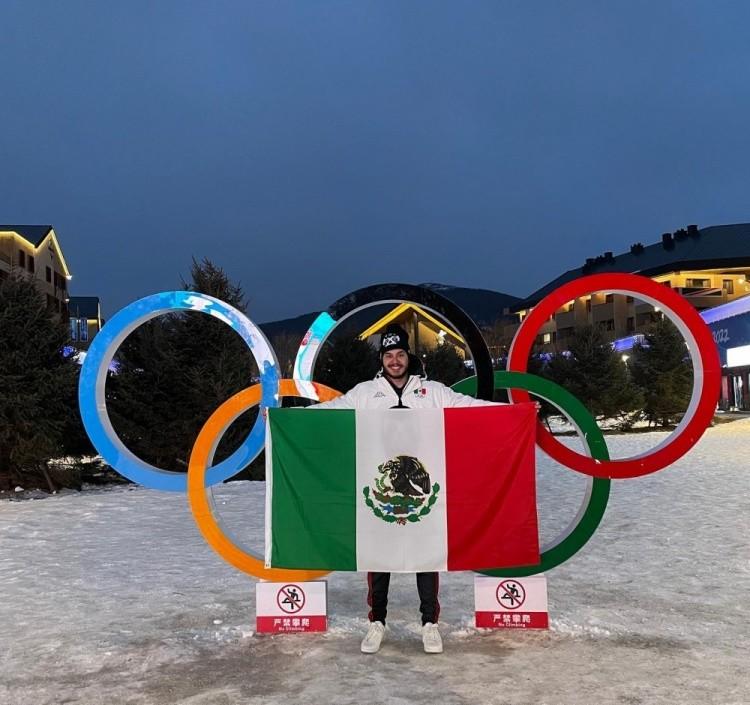
For the vast majority of Winter Olympic athletes, training and competition is all about every day. But Mexican athlete Jonathan Soto Moreno is different — even when he's competing in Beijing, he has to overcome jet lag and take time out to send emails to work.
Moreno, 28, is a manager at a meat processing equipment manufacturing company. On the 11th, he appeared in the men's 15 km (traditional technique) of cross-country skiing at the Beijing Winter Olympics.
With the individual points ranking at the end, Moreno was placed to be the last of the 99 contestants to start. So, when most of the athletes were done, the Mexican was still gliding toward the finish line.
"It was my dream to represent my hometown at the Winter Olympics, and it inspired me to always give my all." He said.
Moreno spent his childhood in Mexico. At the age of 13, he moved with his family to Minneapolis, USA. Unlike the hot Mexicans, the long winter season gives Moreno more exposure to snow sports.
At first, Moreno loved athletics more, just seeing cross-country skiing as a way to stay in shape. After graduating from college, he was obsessed with his hometown and accidentally learned that Mexico even had a ski association, so he had the idea of representing his country in the Winter Olympics.
At the 2018 Winter Olympics in PyeongChang, Herman Maderazo, a Mexican in his forties, appeared on the cross-country skiing competition, completely igniting the dream of Moreno, who is now also a ski instructor at Moreno.
Greatness comes from the beginning of bravery.
Unlike professional athletes, most of the time, Moreno is on his own.
He developed a training and dietary schedule for himself. Get up at 5 a.m., spend two hours soaking in the gym, then change into a suit and punch in to work; continue to skate for 1 to 3 hours after work; on weekends, it's long roller skating, skiing, cycling... And so on, and so on, and it never stops.
Along the way, Moreno sacrificed a lot, and he needed to maintain his job to support his dreams.
"It's not a cheap sport. To compete in the Winter Olympics, you first have to go around the world to compete in events to earn enough points. He told reporters he spends at least $20,000 a year on equipment, commuting and nutritional supplies.
To some extent, the changes in work and lifestyle brought about by the global COVID-19 pandemic have given Moreno the opportunity to realize his dream of the Winter Olympics.
"Telecommuting is becoming more common because of the pandemic, which is crucial for me." He said.
Iceland, Turkey, Lebanon... Moreno began competing for points in various events, and he also competed in last year's Cross-Country Skiing World Championships in Germany. At the time of the competition, the hotel room was his office for juggling work.
Usually, athletes who compete with him start adapting to the venue a week before the game, but Moreno doesn't have that much time.
"Let's say there's a race on Saturday, and I'll take a red-eye flight on Thursday night, take a day off on Friday, and fly back on Sunday night." He said, "By Monday, I'll be in the company's office. ”
It's an extremely tough sport, and it's true that it's called a "snow marathon."
Even if someone retires midway, Moreno is looking ahead, and he sees cross-country skiing as a practice to sharpen himself.
"Even with 100% effort, it's still a very painful race." "But I think that all the pain I've been through is a sign of success, and it tells me to do my best in everything," he said. ”
Moreno finished in the penultimate round, and his performance was more than 15 minutes slower than that of the Finnish champion Ivo Niskanen.
At the finish line, Niskanen took the initiative to go to Moreno to celebrate for him.
"I still can't believe it's true, I've come a long way for this great dream."
(Xinhua News Agency)